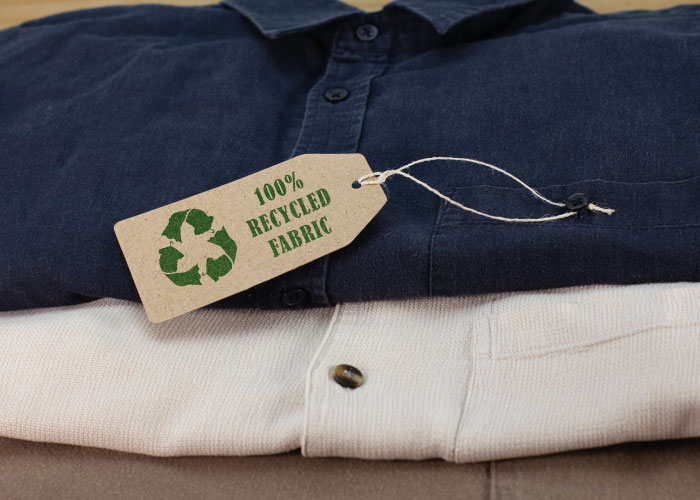Some interesting statistics about Generation Z and their online shopping habits:
- 77% have taken some form of action for a cause they believe in.
- 23% have even boycotted a brand.
- 65% have purchased something based on an influencer’s recommendations.
Who are they?
Generation Z is the generation after Millenials, and the generation before Generation Alpha.
Generation Z (also called Gen Z, zoomers or iGeneration) is the name for people who grew up spanning both sides of the millennium transition. Although there isn’t an exact date range, Generation Z includes those born between the mid-1990s to the early 2010s.
Generation Z is often described as a more well-educated generation that are more stressed but more depressed compared to previous generations. They often have high expectations of themselves that are often not met.
This is a new type of shopper and consumer to get to know.

Changing the face of online retail
Generation Z has been called the most critical consumer group until now, and has a different view of shopping and consuming than previous generations. They are the latest to enter the workforce and have a strong purchasing power. With a bigger demand for higher-quality items and monitoring their spending more closely, brands have to earn their place in Generation Z’s wallets.
Demands sustainable shopping
Generation Z cares a lot about the planet and the future, which is a huge opportunity for sustainable business growth. They believe that the generations before them represented overconsumption, capitalism and materialism.

Spends more on sustainable products
Gen Z consumers are more likely to buy sustainable, high-quality, products. 73% of Generation Z consumers are willing to pay 10% more for sustainable products, according to a report from First Insight. They value personalised products and are often drawn to brands that share their point of view on political issues.
Spends less generally
Many Gen Z-ers grew up watching their parents take huge financial hits and struggled during the Great Recession of 2008. Because of this, they are more economical and price-sensitive.
19% of Generation Z are willing to buy on credit, compared to Millennials, where 30% are inclined to do the same.
The mobile-first, digitally native generation
Social media plays a significant role
It’s a fact: consumer habits have shifted to social media. Generation Z is more or less born with a phone in their hand and has a completely different approach to social media and digitisation in general. They use social media to seek inspiration, research products and connect with their favourite brands.
- 60% of Generation Z in the US use Instagram to discover new brands, products and services.
- 48% of Americans aged 18-34 have purchased from social media.
Social commerce growth
Social commerce is expected to account for 4.3% of all retail e-commerce sales in the US in 2021, according to Business Insider. Emarketer forecasts that social commerce will rise from $34.8 billion to $36.09 billion in 2021.
Today, the category that remains the largest for social commerce is fashion, which includes apparel and accessories.
In other words, social commerce is an e-commerce trend that is here to stay, and it will be very powerful in the future.

Influencers have a great influence
Compared to older age groups, Gen Z shoppers are less likely to trust companies. Instead, they choose to follow influencers on Instagram and YouTube, who have a high following and reach.
A study from Google shows that 70% of teenagers who, for example, subscribe to YouTube channels, and see personalities on YouTube as more relatable than traditional celebrities. This is also where they decide if your product is worth buying or not.
So, there is a reason why retailers are increasingly realising the importance of going from traditional digital marketing to influencer marketing.
Mobile payments
Generation Z embraces mobile payments like mobile apps and mobile wallets.
Over the past years, mobile apps have been increasing in popularity, and have given great results. Companies with a mobile app have a big advantage compared to companies that don’t have an app. Mobile apps convert 157% more than a mobile web session.
Even mobile wallets like Apple Pay and Android Pay have increased.
What is a Mobile Wallet, and how does it work?
A mobile wallet is a type of virtual wallet that stores credit and debit card numbers. It’s accessible through an app installed on a mobile device. Mobile wallets allow users to make in-store payments without having to carry a physical wallet, and online purchases are safer and simpler.

Summary of Generation Z and their shopping behaviour
Demands sustainable shopping.
Generation Z has a different view of shopping and consuming than previous generations. They spend more on sustainable products. To meet Gen Z’s requirements, you need to be clear about how your e-commerce works for a better, more sustainable future.
Social media plays a big role.
Generation Z uses social media to seek inspiration, research products and connect with their favourite brands. Influencers account for a large part of the purchasing decision, make sure that your e-commerce is going from traditional digital marketing to influencer marketing.
Mobile payments.
Over the past years, mobile apps have increased in popularity, which Generation Z embraces. Mobile apps convert 157% more than a mobile web session. Even mobile wallets like Apple Pay and Android Pay have increased.

Meet Generation Z’s expectations with the help of automated online merchandising.
A manual merchandising approach won’t do it.
Online merchandising, carried out manually, can never deliver the sales growth required to justify retailers’ huge investment in driving quality traffic to their online stores. This is because it has too many limitations.
There are simply not enough merchandisers out there, nor hours in the day, to effectively analyse the huge amounts of customer and product data required to optimise product exposure in real-time across catalogues running to tens of thousands of products.
You need a system powered by AI, machine learning, and predictive analytics based on customer behavioural data, context, and crowd wisdom. It presents each shopper with the most relevant selection of products, ordered in an optimum way to maximise sales.
Catching e-commerce trends
One of the most common complaints from online retailers is a lack of agility. As a result, many lose out on vital sales and longer-term brand loyalty by failing to react quickly to trends, especially micro-trends driven by social media. It can take at least 24 hours to respond – that is simply too late.
Merchandising powered by AI and machine learning technologies change the game by automating product assortment and sort order decisions. Trends are spotted in real-time, and this influences everything from search and recommendations to promotional panels, to instantly push trending products to the foreground, and the system adapts just as quickly once trends fizzle out.
Leveraging B2C marketing automation becomes essential in addressing these challenges, offering a scalable solution for optimizing product exposure and adapting swiftly to e-commerce trends











